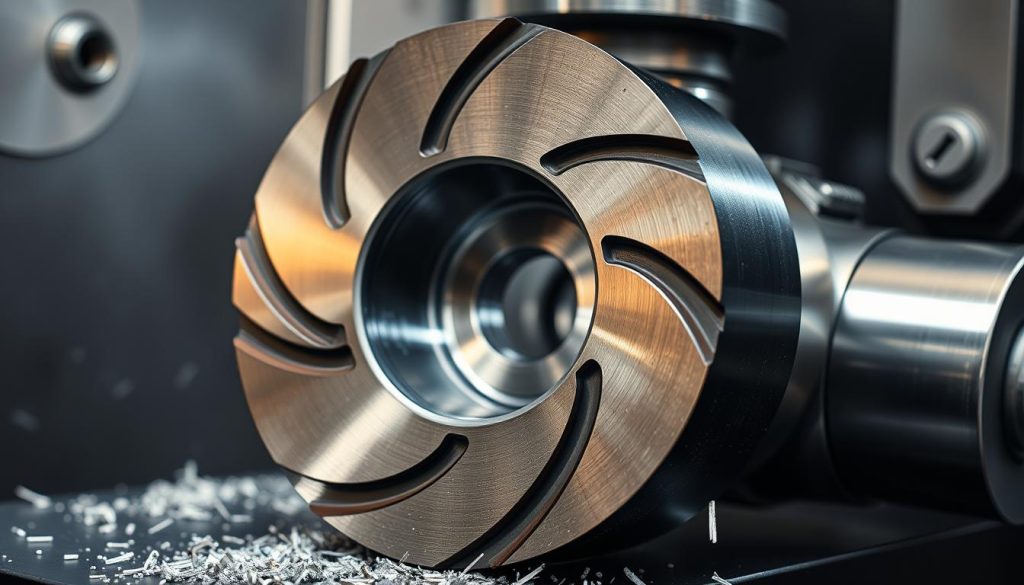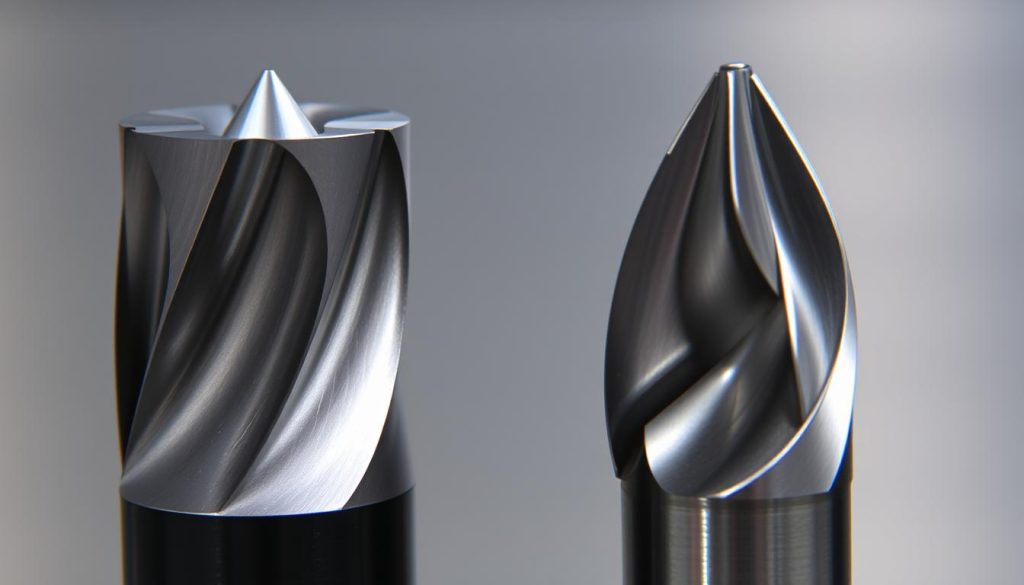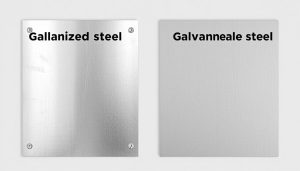In the world of CNC machining, picking the right tool is crucial. Face mills and end mills are two tools that seem similar but are actually quite different. They affect the quality and speed of your work. So, which one is best for your project?
Learning about face mills and end mills can boost your productivity and precision. It’s a key step in improving your CNC machining skills.
What is a Face Mill?
In the world of precision metal cutting, the face mill is a standout tool. It has a large diameter and many cutting edges. This makes it great for removing material and creating flat surfaces with high-quality finishes. It’s a key tool in many modern manufacturing processes.
Design and Functionality
The face mill’s large diameter is its main feature. It can be a few inches to over a foot in size. This size lets it cover a lot of the workpiece, making high-speed machining and quick material removal possible.
It also has multiple cutting edges, usually four or more. This setup helps spread out the work and gives a smoother cut.
Best Applications: Creating Flat Surfaces and High-Quality Finishes
- Machining large flat surfaces such as mold bases, machine tool beds, and large structural components
- Achieving high-quality finishes on large workpieces, ensuring a smooth and precise surface finish
- Performing face milling operations in various industries, including aerospace, automotive, and heavy machinery
The face mill is essential for creating flat, smooth surfaces and achieving top-notch finishes. Its versatility and efficiency make it a vital part of modern manufacturing.

What is an End Mill?
In CNC machining, the end mill is a key tool. It has a cylindrical cutter shape with a multi-flute design. This makes it great for many tasks, like making detailed slots and pockets, and shaping complex parts.
Design and Functionality
The end mill’s design lets it remove material precisely and efficiently. Its multi-flute design boosts its cutting power. This means it can handle tough tasks easily, working well with materials like aluminum, steel, and more.
Versatility in Machining: Slots, Pockets, and Intricate Features
The end mill shines in its ability to do many machining operations. It’s perfect for making fine slots and pockets, and for creating detailed features. Its flexibility makes it a favorite among CNC machinists.
“The end mill’s cylindrical design and multi-flute configuration make it a true workhorse in the CNC machining world.”
Key Differences Between Face Mills and End Mills
Choosing the right tool in CNC milling is crucial for quality and efficiency. Face mills and end mills are two distinct tools with unique features and uses. Knowing their differences helps pick the best tool for your needs.
Cutting Mechanisms and Tool Design
Face mills have a flat cutting surface, perfect for flat surfaces and high-quality finishes. End mills, with a cylindrical cutting edge, are great for slotting, pocketing, and detailed work.
Material Removal Rates and Efficiency
Face mills remove material faster due to their larger size. They’re ideal for quick removal tasks. End mills, however, are better for precise work and complex shapes because of their versatile design.
Ideal Use Cases for Each Tool
Face mills are best for flat surfaces and high-volume material removal. End mills are versatile for various tasks, including slotting and detailed cuts.

Understanding face mills and end mills helps CNC operators make better choices. This ensures efficient and high-quality production.
How to Choose the Right Tool for Your CNC Project
Choosing between a face mill and an end mill is crucial in CNC milling. The right tool depends on the surface quality, material, and speed needed. These factors are key to a successful project.
Factors to Consider: Surface Quality, Material, and Speed
When picking a milling tool, think about these important factors:
- Surface Finish Requirements: Face mills are great for smooth, flat surfaces. They remove a lot of material quickly. End mills are versatile for detailed work and can also produce smooth finishes.
- Material Properties: The material you’re working with matters. Face mills work well with softer materials like aluminum. End mills can handle harder metals like steel.
- Machining Speed: Face mills remove material fast and can go at high speeds. End mills are better for precise work and need slower speeds.
By considering these factors, you can pick the best tool. This ensures the right surface finish, efficient material removal, and optimal speed for your CNC project.
Success in CNC machining comes from choosing the right tool for your project. Knowing the strengths of face mills and end mills helps you make the best choice. This way, you can achieve the best results for your CNC project.
Shixinproto’s Precision CNC Milling Services
Shixinproto is a top name in CNC machining. They are known for their top-notch precision CNC milling services. Their team uses the latest techniques to offer custom solutions for face and end milling. This ensures high quality and efficiency for every project.
Expert Solutions for Face and End Milling Applications
Shixinproto’s engineers are experts in face and end milling. They can handle a variety of machining tasks. They create flat surfaces, high-quality finishes, and even complex geometries.
Customized Tools and Processes for Every Project
Shixinproto knows every project is different. They offer custom CNC milling services. They work with clients to create unique tooling solutions and processes.
This focus on personal service means each project is done with care and precision. It ensures the best results for every client.





